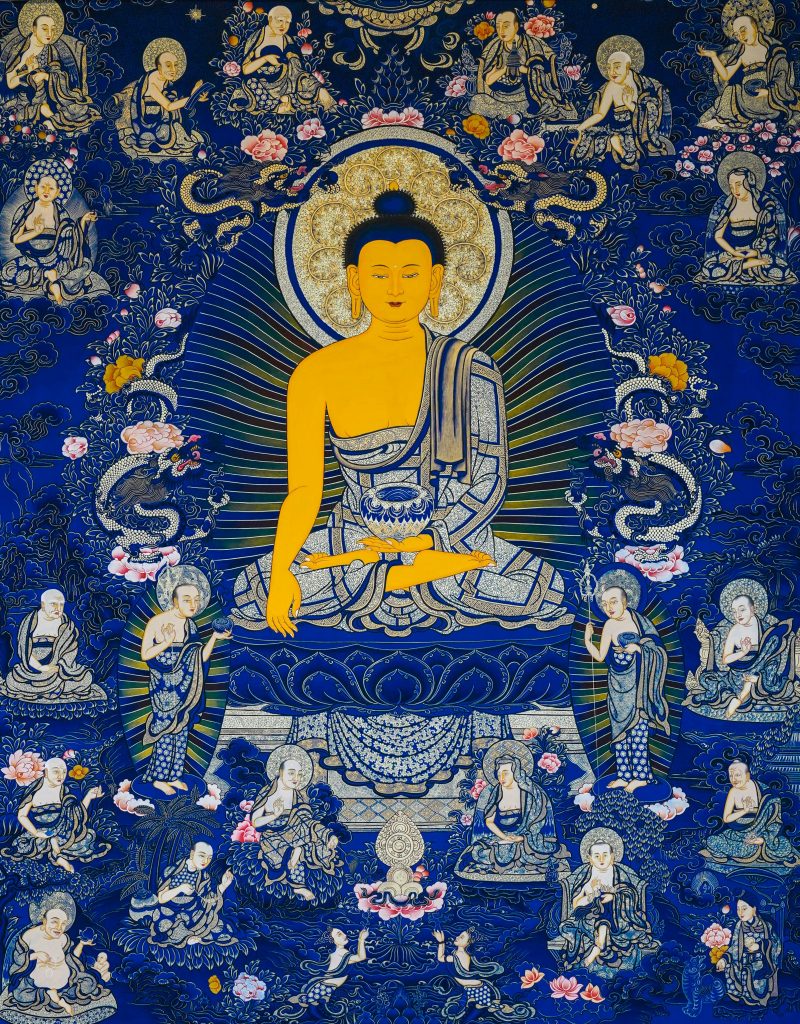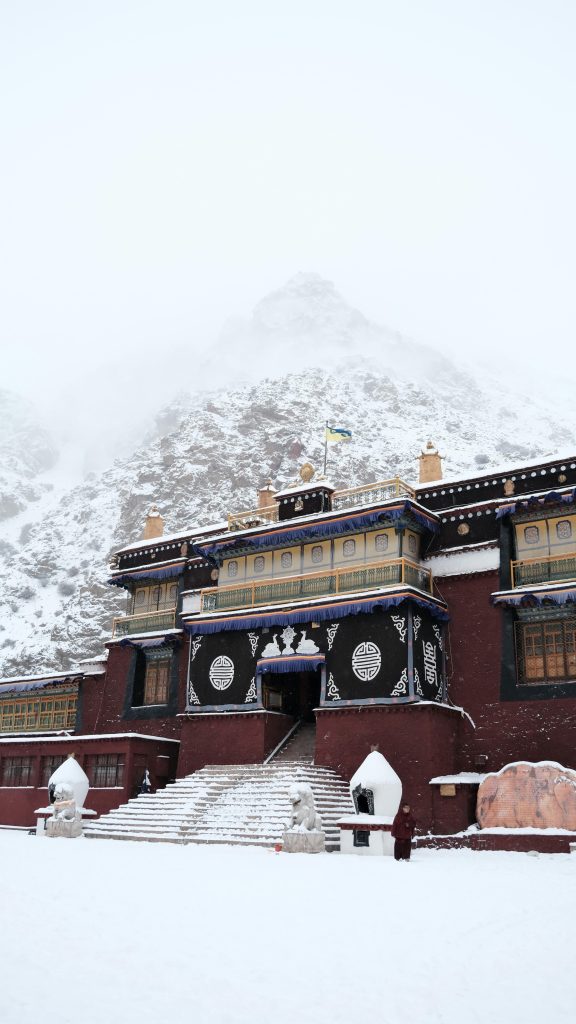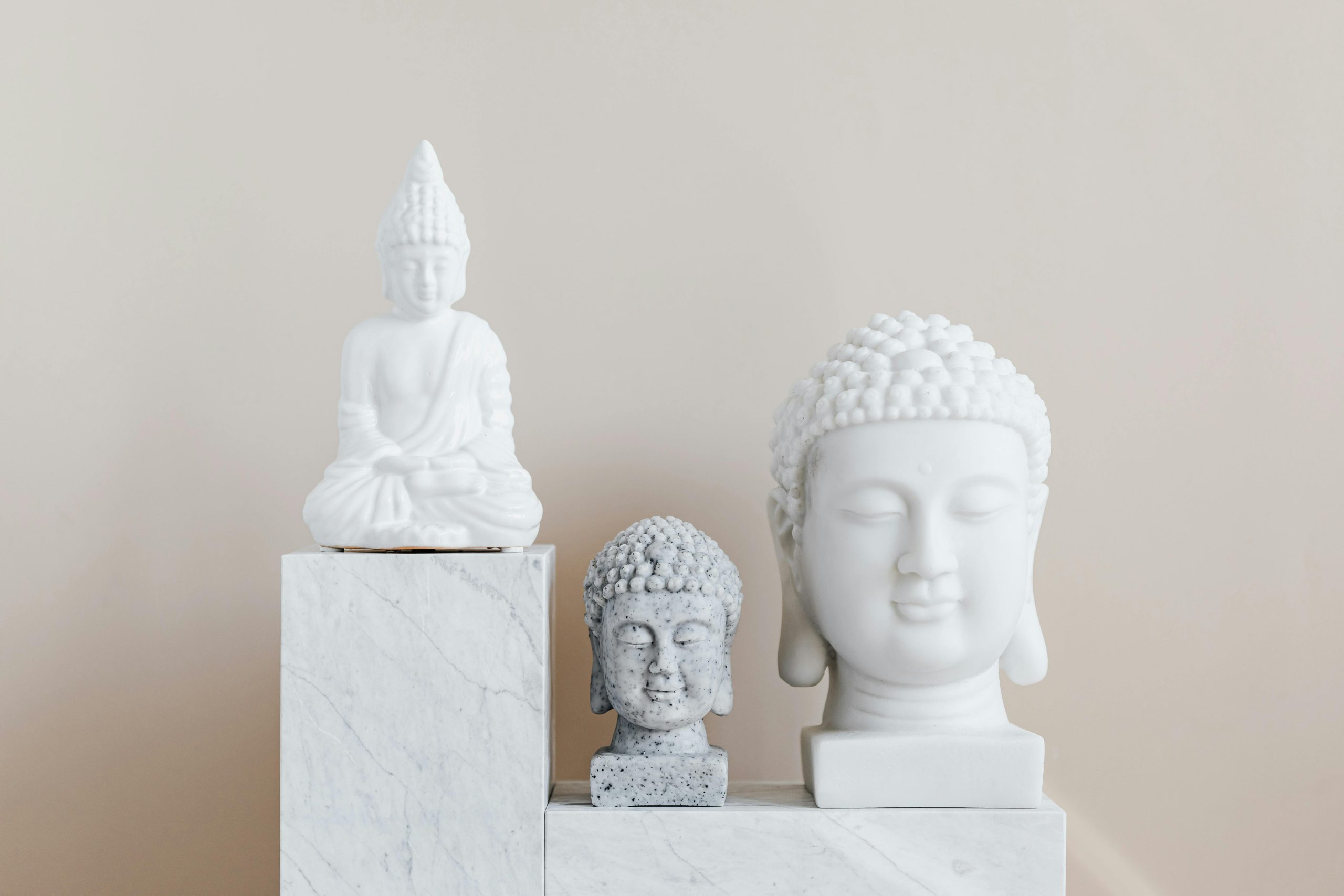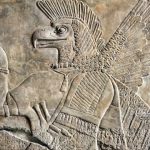Tibetan art, with its roots dating back to pre-Buddhism epochs, has always intertwined closely with the region’s spiritual and cultural practices. Buddhism began to spread throughout Tibet in the 8th century, carrying with it a new artistic movement that would subsequently merge with the local traditions and practices to produce a distinctively Tibetan style. Manifested in vibrant paintings, elaborate sculptures, and distinctive architectural models, Tibetan artistry reflects more then mere decorative and aesthetic values; encapsulating the profound religious, symbolic depth of the region.
Unlike other forms of art, developed and appreciated purely for their beauty, Tibetan art on the other hand, stands as a vehicle of teaching and learning, richly dense in symbolic representations and lessons from Tibetan Buddhism. While its secular counterparts offer visual delight without the need for deep interpretation, fully grasping the layers of Tibetan art, religion, and culture, demands a deep grasp of the spiritual and symbolic fabric of Tibetan life. So, set tight as we explore the dual nature of Tibetan Art; an aesthetic journey deeply anchored in the sacred.
The Evolution of Tibetan Art and Culture
Tibetan Culture, sharply sculpted by its Asian neighbors and significantly reshaped by Buddhism’ arrival in the 7th and 8th centuries, standing as a testament to the marriage of native costumes and external spiritual and artistic contribution. Furthermore, this elaborate intersection between various elements from multiple neighboring countries gave rise to a distinct artistic and spiritual landscape in Tibet, in which art transcends traditional aesthetics to reflects and incapsulates deep cultural narratives and religious teachings and practices. Hence, The result is a vibrant fabric of Tibetan identity, deeply imbedded within the teachings of Buddhism, illustrating a culture that has adeptly woven together diverse influences into its own unique fabric.
The Main Corners of Tibetan Art and Culture
Tibetan Thangka Paintings
Tibetan Thangka paintings stand as a window into the spiritual and philosophical sphere of Buddhism, serving as an object of meditation, as much as a viable means for teaching the stories of Buddha, various deities, and the cycle of life. These intricate paintings, with historical roots that stretch back to the 11th century, are rich in symbolism, leveraging complex imagery to convey deep spiritual messages. Thangka are believed to bring blessings to the viewers and guide them on their spiritual journey.

Few examples of Thangka paintings, pieces that hold significant importance in Tibetan Buddhism:
1. Wheel of Life Thangka: Primarily embodying the Buddhist view of the cyclic nature of life, depicting the six realms of existence and offering a visual representation of the path to enlightenment.
2. Mandala of Avalokiteshvara: Centered around Avalakiteshvara, the compassion Bodhisattva. She is a representation of the spiritual foundation of the cosmos, serving as a means to contemplation in order to cultivate compassion within oneself.
3. Green Tera Thangka: The Green Tara is revered for her ability to overcome difficult obstacles and bring swift protection to her followers. The painting symbolizes the active compassion of the deity in assisting practitioners on their path.
Tibetan Sculptures
Sculpture, an integral element of the region’s artistic and spiritual heritage, bringing the teachings of Buddha into the Three-dimensional form. Crafted from a variety of materials such as bronze, copper, and clay, these sculptures transcends artistic expressions to serve as focal points for devotion, encapsulating the divine presence of Buddhist deities and enlightened beings. Meticulously created, as sculptors follow iconographic guidelines, emphasizing that each figure’s attributes and postures convey specific aspects of the deity’s character and teachings accurately
Two notable examples of Tibetan sculptures:
The Jokhang Temple in Lhasa is home to the venerated sculpture known as Jowo Shakyamuni Buddha, which depicts Shakyamuni Buddha at the age of twelve. One of the most revered and sacred sculptures in Tibetan Buddhism, it is said to have been blessed by the Buddha himself and attracts pilgrims from all over the area.
Maitreya Buddha Statues: Often shown as a Bodhisattva biding his time before he descends down to earth, Maitreya Buddha sculpture represents the world’s future Buddha in Buddhist eschatology
Tibetan Architecture
Tibetan architecture offers four distinctive elements that combine deep religious significance with utility in a unique blend. First, it values stability and adaptability, exemplified by the wind horse flags that add a dynamic element while bearing religious significance. Second bright schemes of color reinforce the region’s aesthetic ideals on furniture and wood rafters, adorning both the inside and outside of buildings.
Thirdly, even in the most basic of tents with Thangka paintings, the altar, when positioned in an honorable location, represents purity and dedication. Lastly, structures, made to capture natural light, which warms and illuminate the inside for both functional and ceremonial reasons.

Iconic Tibetan Architecture:
Potala Palace: Once the winter residence of the Dalai Lama, this architectural marvel in Lhasa is a testament to Tibetan ingenuity. Its massive, Fortress-like structure, set against the backdrop of the Himalayas, dominated the landscape. The place is not just a political center but also a spiritual heaven, housing numerous chapels and tombs of past Dalia Lama.
Jokhang Temple: Considered the spiritual heart of Tibet, this temple in Lhasa attracts pilgrims from all the corners of the Tibetan Buddhist world. Its sacred atmosphere, enhanced by the intricate designs and venerations of the Jowo Shakyamuni status, believed to be one of the most accurate depictions of the Buddha portrait. The Jockang Temple stands as a profound symbol of Tibetan Buddhism’s depth and devotion.

In a nutshell, The vibrant fabric of Tibetan art, spirituality and culture merge seamlessly, inviting exploration and contemplation. Each stroke of a brush and chisel’s mark echoes centuries-old wisdom, resonating with the profound depth of Tibetan Buddhism.







